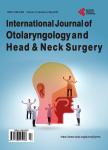Hidden Hearing Loss: Causes, Current Knowledge, and Future Directions
Hidden Hearing Loss: Causes, Current Knowledge, and Future Directions作者机构:Department of Otolaryngology Eye and Ear Hospital Naccach-Dbayeh Lebanon Department of Audiology Escula de Formacio Superior SAERA Castellon de la Plana Spain
出 版 物:《International Journal of Otolaryngology and Head & Neck Surgery》 (耳鼻喉(英文))
年 卷 期:2023年第12卷第3期
页 面:107-123页
学科分类:1002[医学-临床医学] 100213[医学-耳鼻咽喉科学] 10[医学]
主 题:Hidden Hearing Loss Speech Testing Speech Intelligibility Noise Induced Hearing Loss Ototoxicity Schwan’s Cells Ablation
摘 要:Introduction: Hidden hearing loss (HHL) is a type of auditory disorder that affects the auditory neural processing and hearing sensitivity in subjects with normal hearing thresholds. Unlike central auditory processing disorders, HHL happens when the cochlea (the peripheral auditory organ) is affected. There are several known risk factors to HHL which includes noise exposure, ototoxic drugs, and peripheral neuropathies, and age. Recent studies have shed light on this type of hearing loss, its etiology, prevalence, and how it can affect the auditory acuity in humans. Methods: This paper covers the current research regarding HHL, its causes, the different mechanisms involved in this disorder, and the diagnosis and potential treatments related to it. We will delve deeply into different researches concerning HHL. 4 articles from 285 were selected focusing on normal hearing individuals with bad speech intelligibility were discussed in this paper. In addition, articles discussing the effects of noise exposure on hearing impaired individuals were not considered as this study solely aims to focus on normal hearing sensitivity individuals with HHL, resulting in 4 articles from 285. Results: Numerous literatures over the decades have suggested that HHL is due to the degeneration of cochlear ribbon synapses, or hair cells synapses without hair cell damage. Their association with HHL was noted several times through this study, whether we were studying the effect of noise exposure, of age, or of ototoxicity. In all cases, no significant hair cell damage was observed, and normal thresholds were recovered. However, a decline in the amplitude of Auditory Brainstem Response (ABR) peak I from auditory nerve (AN) responses in noise exposed subjects and a decline in compound action potential (CAP) was measured when certain drugs were applied to the round window of Guinea pigs. Conclusion: Most studies, have proven that cochlear synaptophysin is the major contributor to noise induced, ag



